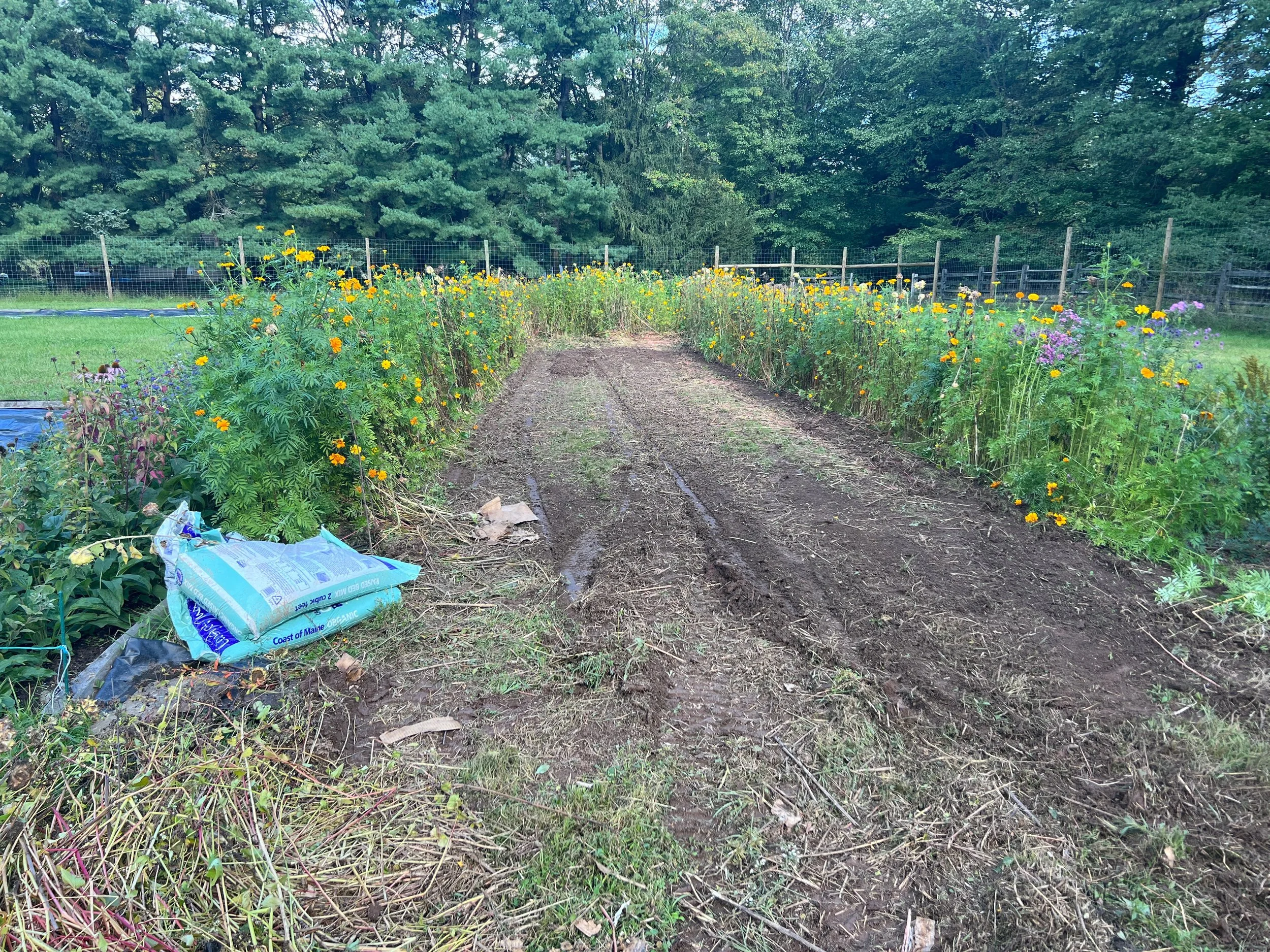Ode to Women Who Garden
I appreciate everyone who gardens, but these days as I’m preparing the flower field for the end of the season, I’m thinking a lot about the women I know who garden, who take time out of their busy lives to grow and nurture plants.
I took up flower farming as my “third act” job after already having careers as a lawyer and a teacher. I have always wanted to farm, to be involved with the land on a daily basis, and I knew if I was going to do it while I could still manage the physical labor, I had to do it soon. But growing flowers as a job is a little bit different from what I’m thinking about these days. I’m thinking about women who have jobs–jobs taking care of children, or jobs outside of the home–and still find time to put their hands and plants in the soil.
“Gardening” in my Montclair yard
I have also been thinking about my start as a gardener. I remember how excited I was when we bought our first home in Montclair, New Jersey, and I inherited a large (we were moving from Brooklyn!) perennial garden. I couldn’t wait to tend flowers and watch the succession of blooms arrive as promised by the previous owner of our home. The only problem was when spring rolled around, I couldn’t tell the difference between a weed and a flower and my succession of blooms was quickly overrun by ground ivy and mile a minute weeds. I remember trying to convince my young children that gardening was fun, but it usually turned into an impromptu game of T-ball and if weeding did occur, it took hours longer than it should have. I kept at that garden, but it was more work than I ever imagined, and it often came at the end of a long list of other obligations.
Native aster and goldenrod in my field
Yet, I know many women who manage gardens AND children, or gardens AND jobs, or some combination of all. The act of home gardening is a largely under celebrated contribution to our ailing planet and an act of hope. I recently came across the following quote by Sir Roy Strong, a British historian and gardener, “Every winter we live in hope that spring will come. This or that doesn’t do as well one year as last but the hope is next year that it will do better. We plant in hope. We live in hope. What more can anyone ask of life?”
In this age when the planet feels like it might crumble beneath our feet, hope, the powerful antidote to feelings of helplessness, is in vastly short supply. It is hard to watch the effects of a warming climate and feel the fragility of the earth. The world feels breakable. Yet, when I talk to women about their gardens, I feel hope. Women who garden deal in hope. Every plant in the ground is a vote of confidence that tomorrow can bring joy and beauty. It replaces monoculture lawn with a diverse source of plant life for bugs and birds. It creates color, beauty, serenity. While we wait and work for systematic change, planting a garden and cultivating beauty is a powerful act of hope.
New perennial bed in process.
Life in a garden is a rewarding one, but it is a whole lot of work. It is also largely private. It happens in backyards and on patios. We all know that good citizens vote, and volunteer at their children’s schools, and contribute to the local food bank, but what if good citizenship also involved growing a garden and creating habitat? What if we widely recognized the work of gardeners?
One of the great good fortunes of this year of flower farming is that it has put me in touch with many women who garden. I am in awe of the hours they spend and the knowledge they have about growing and nurturing plants. I am so grateful for their efforts and their friendship.
Thank you gardeners for improving this world, one garden plot at a time!
When thinking about gardeners, I have also been thinking about a few of my favorite resources. Here are just a few:
For inspiration:
Podcast: Cultivating Place with Jennifer Jewel
Print: Anything written by Margaret Renkl, including her New York Times column and Graceland
Braiding Sweetgrass, by Robin Wall Kemmerer
To build knowledge about natives:
Nature’s Best Hope by Doug Tallamy
The Northeast Native Plant Primer by Uli Lorimer
Website: Homegrown National Park www.homegrownnationalpark.org




